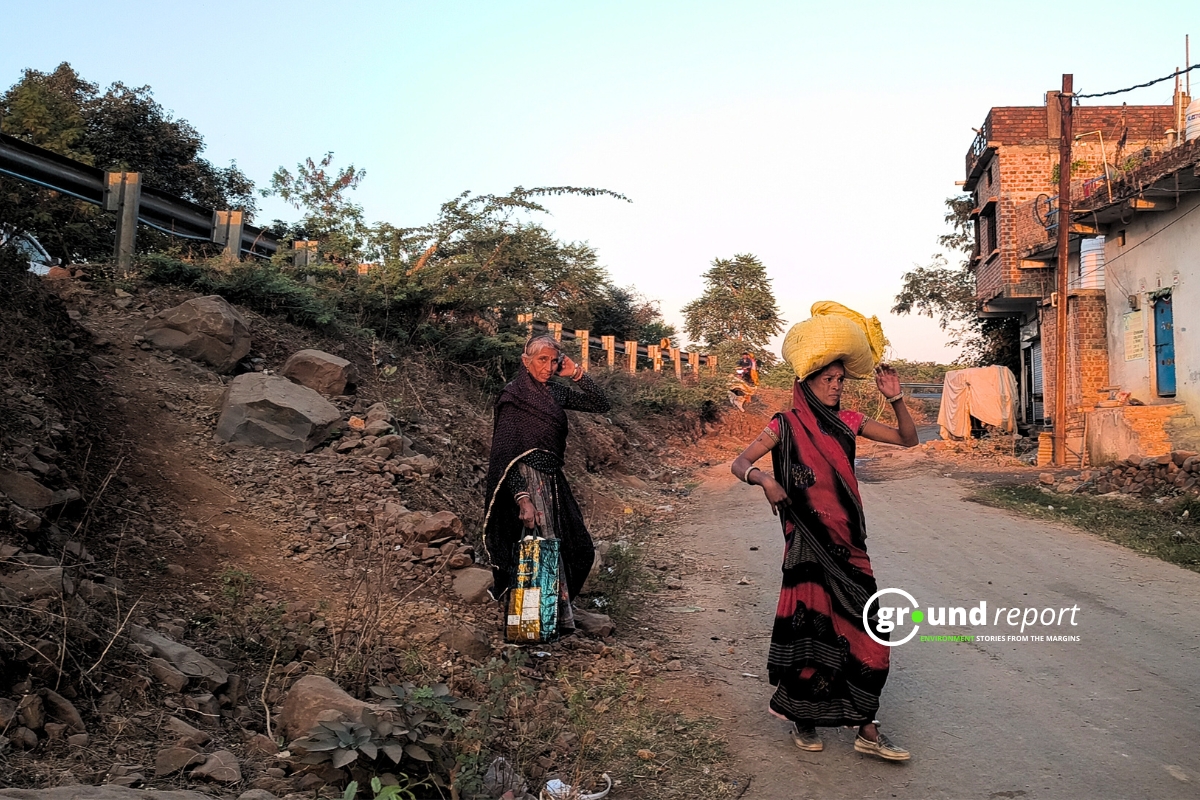Chamoli district is once again facing a crisis as land subsidence spreads in Nandanagar’s Band Bazaar area. Cracks in the ground have widened, and several buildings have collapsed, forcing the evacuation of families, shops, and cattle.
On Sunday, three more houses collapsed in the market area. The residential buildings of Govind Singh, Parvati Devi, and Pushpa Devi were among those damaged. All three families had already been moved to relief camps by the administration.
Naib Tehsildar Rakesh Deoli confirmed the extent of the destruction. “Land subsidence is increasing in the affected area. So far four residential houses have been razed to the ground, while debris has come from behind five houses. Shops have also been evacuated due to the fear of danger,” he said.
The administration has evacuated 30 shops and 19 buildings in the Band Bazaar. A relief camp has been set up at Maria Ashram, where seven rooms are now available. One family has already been shifted there. Officials say more families may need relocation as cracks spread and rainfall continues.
District Magistrate Sandeep Tiwari has ordered the evacuation of livestock from gaushalas near the danger zone. Trade Union President Nandan Singh said, “Thirty shops in Band Bazaar have been vacated. While 40 cattle have been kept in the gaushalas identified by the administration. Arrangements for fodder have also been made for them here.”
Throughout Sunday, residents of Nandanagar carried belongings out of their homes with help from police and disaster response teams. Police personnel used loudspeakers to warn people to stay alert, especially during rain, and to shift immediately to safer locations. Officers also handed out biscuits and water bottles to families as they moved.
Along with cracks in the ground, locals have reported water leakage from beneath several houses in the market. “Water is leaking from under the houses of Narendra Singh, Govind Singh, and Bhavan Singh,” said Trade Union President Nandan Singh. Large volumes of muddy water are also emerging from Palpani Tok, adding to fears of further collapse.
The crisis escalated late on Friday night, when eight houses collapsed within hours after continuous rain. Since then, 34 families have been evacuated, while traders from 40 shops have also cleared their premises.
The fear of a massive rock above the market is growing. Locals say it appears to be sliding and could cause severe damage. “The biggest fear is of the huge rock which is sliding right above the market. If it breaks in the next few days, about 150 shops will turn into rubble. The next five days are on red alert and the rock seems to be sliding,” said Nandanagar Vyapar Mandal President Nandan Singh Bisht.
The scenes in Nandanagar have drawn comparisons with Joshimath, which faced a similar disaster in January 2023. Cracks had appeared in more than 800 houses there, forcing the evacuation of 181 buildings. Experts then linked the collapse to poor drainage, heavy construction, and hydropower projects in the region.
A 1976 report by the Mishra Committee had already warned that Joshimath sat on a debris mound with weak soil, making it prone to subsidence. The Geological Survey of India later echoed these findings, noting that unchecked construction and water seepage were hollowing the ground.
The latest disaster in Chamoli shows the continuing risk to hill towns built on fragile foundations. In nearby villages of Nandanagar Panchayat, 16 more houses have come under threat due to cracks. The District Disaster Response Force has shifted 64 people from Kuntari village to relief camps.
Road connectivity across the region has also been hit by landslides and flooding. The Sera-Mok Dhurma motor road is closed, while the Nandanagar-Nandprayag and Nandanagar-Bhenti roads are blocked at multiple points.
For residents, the danger feels immediate. “It all happened so fast. One moment we were in our homes, the next we were running for our lives,” said Vijay Singh, a villager from Mok Malla. His house was evacuated after flash floods caused by a cloudburst hit the area last week.
The administration continues to assess crop losses and structural damage. But for now, families displaced by cracks and collapses remain in relief camps, uncertain when—or if—they can return to their homes.
Support us to keep independent environmental journalism alive in India.
Keep Reading
Indira Sagar Canal Mismanagement Hurts Barwani Farmers
From First to Failed: Maheshwar Dam Headed for Auction
Water for power plant, but none for people, story of displaced farmers
MP Forests Face One Health Crisis as Cattle, Wildlife Meet
Stay connected with Ground Report for underreported environmental stories.
Follow us onX, Instagram, and Facebook; share your thoughts at greport2018@gmail.com; subscribe to our weekly newsletter for deep dives from the margins; join our WhatsApp community for real-time updates; and catch our video reports on YouTube.
Your support amplifies voices too often overlooked, thank you for being part of the movement.






